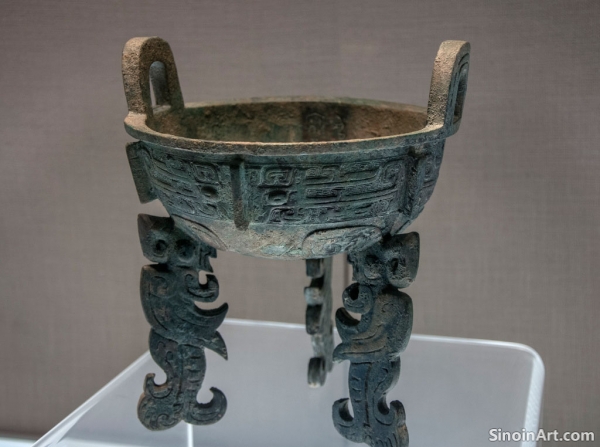The Ethical Considerations of Collecting and Studying Ancient Chinese Bronze Ware
|
The collection and study of ancient Chinese bronze ware present ethical considerations that should be carefully examined, including the issues of provenance, ownership, cultural heritage, and the responsibility to protect these important artifacts. The collection and study of these artifacts comes with a number of important ethical responsibilities. The ownership of cultural treasures is a complex issue that requires careful consideration.  Many ancient bronze objects have been acquired through looting, illegal excavations, or other unethical means, resulting in a loss of valuable archaeological context and damage to the cultural heritage of China. The illegal excavation and distribution of these objects is a significant problem for the study and preservation of these artifacts. The history of the works is inseparable from their cultural context.  The responsible collection of bronze ware should involve careful scrutiny of provenance, documentation, and compliance with international laws and ethical guidelines. The provenance of each artifact should be clearly documented and verified. This also helps to verify the legitimacy of the acquisition.  The study of Chinese bronze ware should be conducted with respect for their cultural significance, giving preference to non-destructive methods of analysis and interpretations that promote intercultural understanding and sensitivity. The methods used in research and analysis must be carefully considered to ensure the long term preservation of the works of art. The preservation of bronze ware for future generations is of the utmost importance, and every effort should be made to ensure the proper care and stewardship of these irreplaceable cultural treasures. The proper care and preservation of these works of art is essential to ensure that they remain available for study for many years to come. |
Tag : bronze ethics, artifact collecting, cultural heritage, museum ethics, provenance
Related information
- The Role of Bronze in Ancient Chinese Storytelling: Depictions of Myths and Legends
- The Use of Bronze in Ancient Chinese Medicine: Exploring the Relationship Between Materials and Healing
- The Enduring Appeal of Chinese Bronze Ware: Timeless Art and Cultural Legacy
- Bronze Ware and the Development of Ancient Chinese Architecture: Design Principles and Construction Tools
- The Use of Bronze in Ancient Chinese Public Works: Infrastructure, Irrigation, and City Planning
This article explores the role of bronze ware in ancient Chinese storytelling, highlighting how bronze objects depicted myths, legends, and heroic figures, and how they helped to preserve and transmit cultural narratives through a visual medium.
This article explores the use of bronze in ancient Chinese medicine, highlighting the belief that the material itself possessed healing properties, and how it was used in creating vessels for preparing remedies, and in some therapeutic practices.
This article emphasizes the enduring appeal of Chinese bronze ware, highlighting its timeless beauty, its blend of function and symbolism, its ability to connect us with the ancient world, and the importance of continued study and preservation for future generations.
This article explores the use of bronze in ancient Chinese architecture, highlighting its role in creating surveying tools, structural components, decorative elements, and demonstrating its importance in both design and construction.
This article explores the use of bronze in ancient Chinese public works projects, highlighting its role in surveying, water management, construction, and demonstrating its importance in the development of infrastructure and city planning.